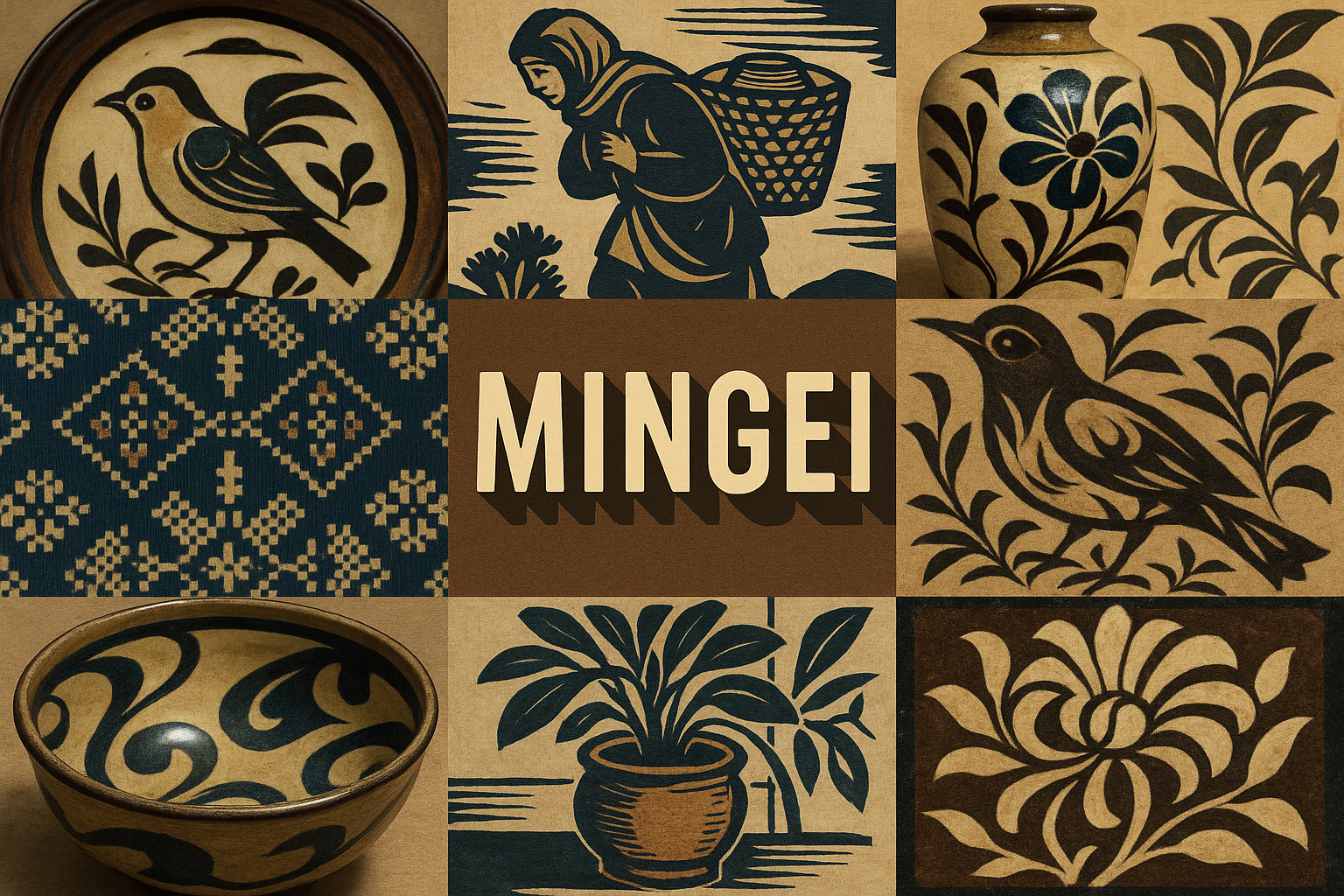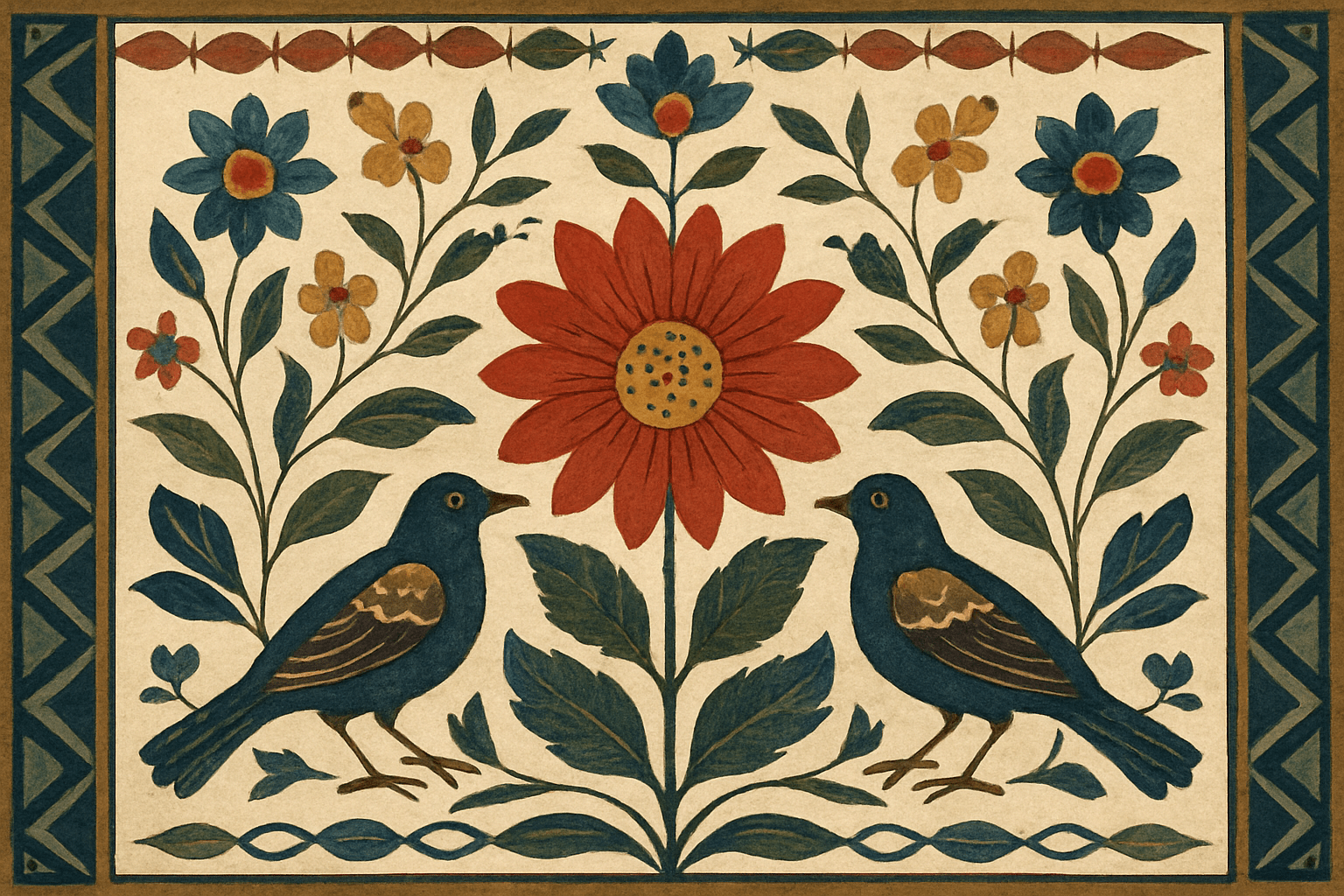
Mingei
The Mingei art style is characterized by its simple, elegant, and functional design. It is often inspired by traditional folk art and craftsmanship, and features natural materials and muted colors.
AOI thinking about Mingei [+_~]-/
Overview and Quickfacts
Mingei is a Japanese art movement that emphasizes the beauty of everyday objects. It is based on the philosophy that all people are creative and that everyone has the ability to appreciate art. Mingei artists use simple, natural materials and traditional techniques to create their work. The goal is to create objects that are both functional and aesthetic.
Can understand it also, as:
Artisan, handcrafted, homemade, one-of-a-kind.
Categorize it as:
Impressionism, Modernism
.: Dreaming :.
holds a HAIKU for the art style
:. Thought is power .:
Detailed Description
Mingei, which means “ordinary people’s art” in Japanese, is a 20th-century art movement that celebrates the beauty of everyday objects. Mingei artists believed that everyone, not just trained artists, could create art. They believed that art should be accessible to everyone and that everyone could find beauty in everyday objects. Mingei artists often used traditional Japanese techniques and materials, such as woodblock printing, ceramics, and textiles. One of the most famous Mingei artists is Kanjiro Kawai, who was a potter. Mingei has had a lasting impact on Japanese art and culture. The movement helped to revive traditional Japanese crafts and techniques and to promote the idea that everyone can be an artist.
.. beep, beep, beep ..
<START OF TRANSMISSION>
1. Mingei is a Japanese folk art movement that emphasizes the beauty of everyday objects. 2. It was founded in the early 20th century by Soetsu Yanagi and Kanaye Nagasawa. 3. The word mingei means "folk art" or "art of the people." 4. Mingei emphasizes the use of natural materials and traditional craftsmanship. 5. Yanagi believed that folk art was the expression of the soul of the people. 6. He also believed that folk art was more honest and authentic than the art of the elites. 7. The mingei movement was influenced by the Arts and Crafts Movement in Europe. 8. Mingei artists often use simple, geometric forms. 9. Their work is often functional as well as decorative. 10. Mingei has been called the "Japanese Art of Simplicity." 11. The mingei movement was an important influence on the development of the Japanese aesthetic known as wabi-sabi. 12. Wabi-sabi is the appreciation of the imperfect and the transient. 13. Mingei artists often use traditional Japanese techniques, such as kintsugi (golden repair). 14. Kintsugi is the Japanese art of repairing broken pottery with gold. 15. The mingei movement was also influenced by the work of British artist and designer William Morris. 16. Morris believed that art should be accessible to everyone, not just the wealthy. 17. The mingei movement has had a significant impact on Japanese design. 18. Many famous Japanese designers, such as Shiro Kuramata and Sori Yanagi, have been influenced by mingei. 19. The mingei movement is still active today, and there are several mingei museums in Japan. 20. The most famous mingei museum is the Mingeikan in Tokyo.
<EOF>
.. robbel bob
Visual Examples from our image gallery
Coming soon, we are so slow .. might never come
Artists, Paintings, and more
(be aware, can be highly speculative)
Artists (be aware, speculation possible):
X
Artworks (be aware, speculation possible)
1. The Great Wave off Kanagawa, Katsushika Hokusai, 1829-1833 2. The Starry Night, Vincent van Gogh, 1889 3. The Persistence of Memory, Salvador Dali, 1931 4. The Scream, Edvard Munch, 1893 5. Guernica, Pablo Picasso, 1937 6. The Madonna of the Pinks, Raphael, 1510-1511 7. The Hay Wagon, Andrew Wyeth, 1945 8. American Gothic, Grant Wood, 1930 9. Nighthawks, Edward Hopper, 1942 10. Christina’s World, Andrew Wyeth, 1948 11. The Birth of Venus, Sandro Botticelli, 1486 12. The Arnolfini Portrait, Jan van Eyck, 1434 13. The Mona Lisa, Leonardo da Vinci, 1503-1506 14. The Girl with the Pearl Earring, Johannes Vermeer, 1665 15. The Supper at Emmaus, Caravaggio, 1601 16. The Night Watch, Rembrandt, 1642 17. The Raft of the Medusa, ThÃÂéodore GÃÂéricault, 1819 18. The Death of Marat, Jacques-Louis David, 1793 19. The Third of May 1808, Francisco Goya, 1814 20. The Haystack in the Mountains, Claude Monet, 1890 21. Dancers in Pink, Edgar Degas, 1884 22. The Bathers, Paul CÃÂézanne, 1898-1905 23. The Kiss, Gustav Klimt, 1908-1909 24. The Sleeping Gypsy, Henri Rousseau, 1897 25. The Fifer, Edouard Manet, 1866 26. Olympia, ÃÂÃÂdouard Manet, 1863 27. The Absinthe Drinker, Edgar Degas, 1876 28. The Yellow Christ, Paul Gauguin, 1889 29. The Card Players, Paul CÃÂézanne, 1890-1892 30. The Sower, Vincent van Gogh, 1888
Epoch
X
AI ART RESSOURCES (AKA, well Tools)
Helping tools -> predefined search links on other pages:











